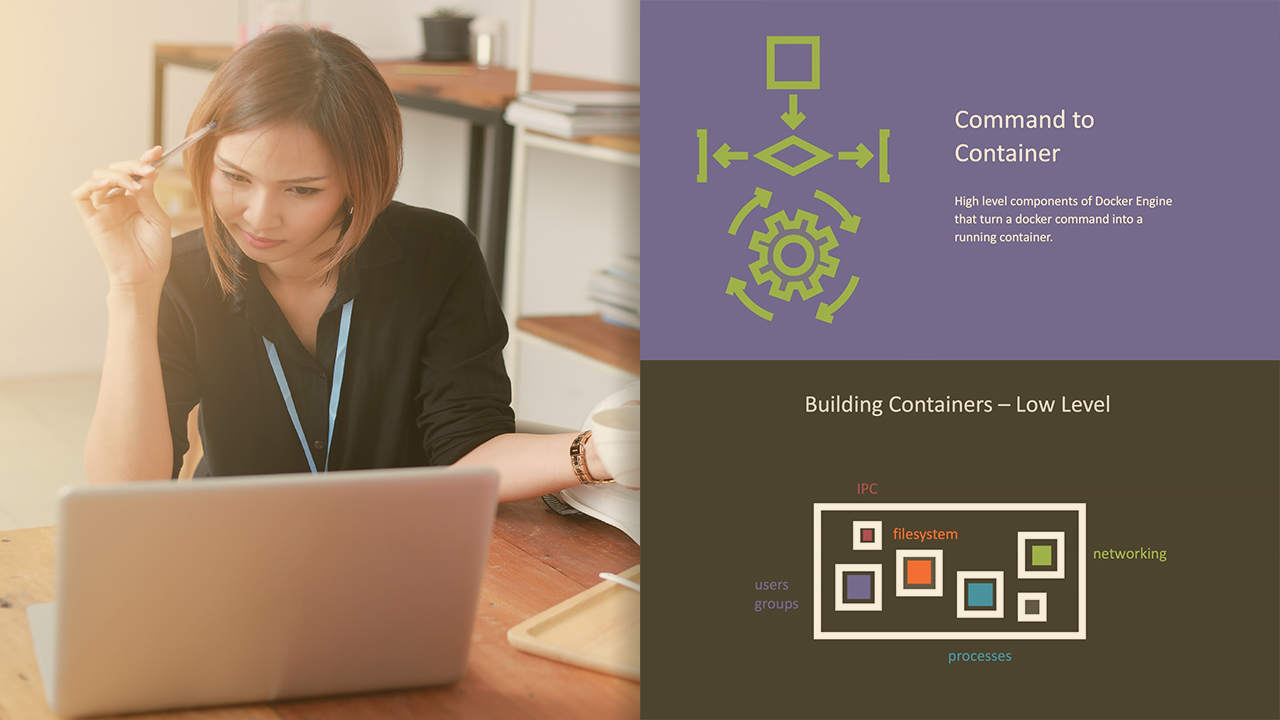- Course
Managing Docker on Linux Servers
Want to learn how to install Docker for Linux? To secure access to the server side and easily manage contexts to connect from any client?

- Course
Managing Docker on Linux Servers
Want to learn how to install Docker for Linux? To secure access to the server side and easily manage contexts to connect from any client?
Get started today
Access this course and other top-rated tech content with one of our business plans.
Try this course for free
Access this course and other top-rated tech content with one of our individual plans.
This course is included in the libraries shown below:
- Core Tech
What you'll learn
Thanks to Docker Desktop, you may fall in love with Docker on Mac and Windows. Behind the scenes, and in many production environments, you will find Linux! In this course, Managing Docker on Linux Servers, you will gain the ability to deploy Docker Engine for Linux. First, you will learn to install Docker Engine on your preferred Linux distro whether officially supported or not. Next, you will discover how to manage connections between the client and server with docker contexts, including how to secure access! Finally, you will explore containerd and other pluggable backend components that can be swapped out to meet your needs. When you are finished with this course, you will have the skills and knowledge of deploying Docker Engine for Linux needed to run containers in development, test, and even production Linux environments.
Managing Docker on Linux Servers
-
The Simplicity of Docker on Linux | 4m 36s
-
Exploiting Throw Away Linux Learning VMs with Vagrant | 2m 2s
-
Installing Vagrant and Cloning the Course Exercise Files | 3m 51s
-
Virtualbox Is a Great Hypervisor Choice to Pair with Vagrant | 3m 21s
-
Finding a Trustworthy Vagrant Box for a Linux Learning VM with CentOS 8 | 2m 18s
-
Creating a Learning Environment: A Linux VM with CentOS 8 via Vagrant and VirtualBox | 4m 14s
-
SSHing into the VM | 1m 12s
-
Determining if Your Distro Is Supported and What Instructions to Follow | 4m 17s
-
Make Sure Old Docker Versions (Packages) Are Removed | 1m 14s
-
How You Install Docker from an Official Repo, Package or Convenience Script Depends on Your Use Case | 4m 8s
-
Adding the Docker Repository to Locate and Install Official Docker Packages and Builds | 2m 21s
-
Installing the Official Docker Packages on CentOS and Verifying the Docker CLI Works | 2m 24s
-
Starting the Docker Engine Service and Using sudo to Access the Docker Unix Socket | 2m 21s
-
Granting Access to the Docker Daemon Unix Socket | 3m 11s
-
Enabling the Docker Engine Service to Start Automatically | 3m 56s
-
Understanding the docker-ce systemd Units | 2m 26s
-
Verifying the Docker Engine Service Now Starts Automatically | 1m 43s

